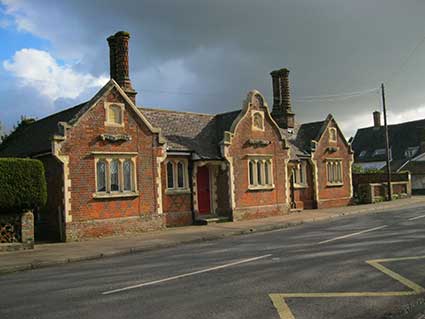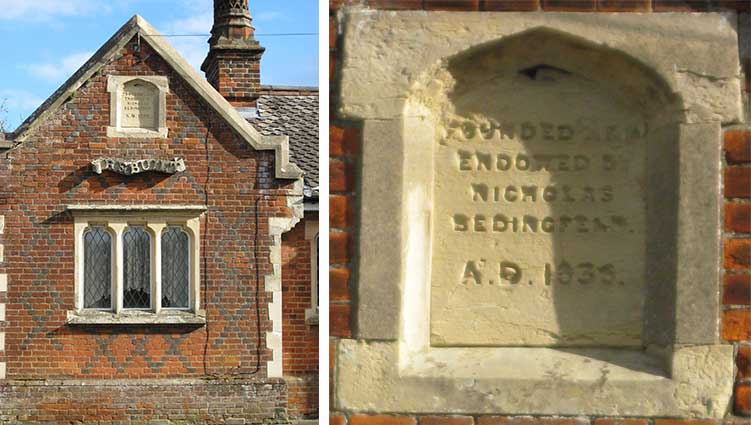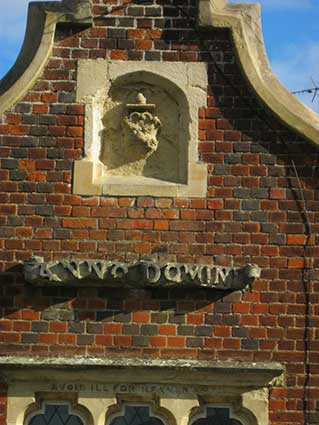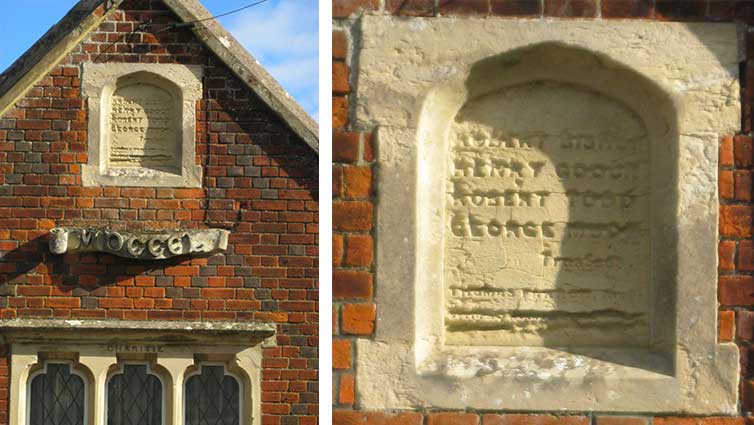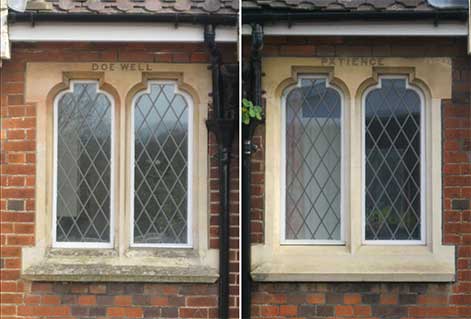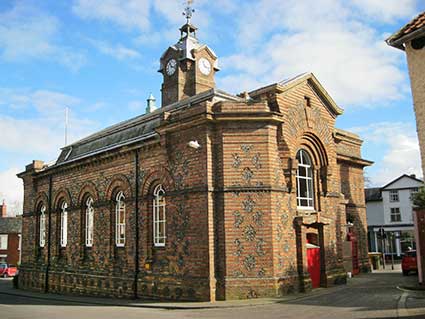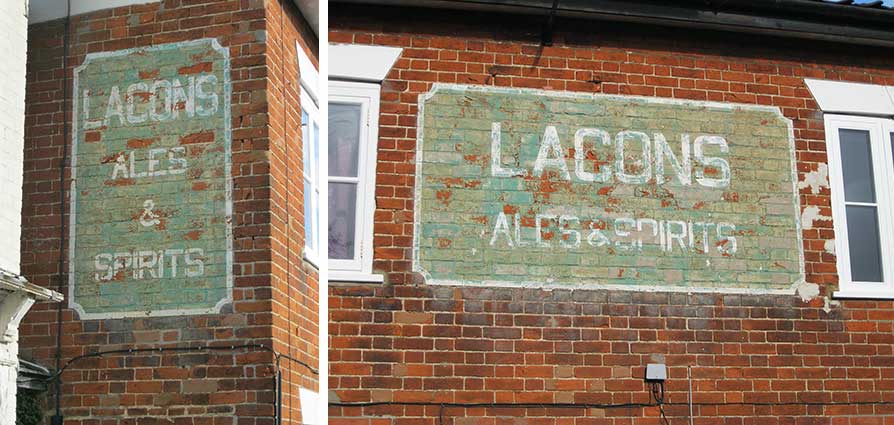Turning off Broad Street
into Church Street, one finds a former public house Two versions of the
brewer's advertisement are painted on the brickwork and well-preserved:
white capitals on a green ground in a white-borderd cartouche. The
White Horse traded here from 1840 and 1920. There are Lacons brewery
signs around the East Anglia, see our page on Bungay
for details about
the Great Yarmouth Brewery.
12 Church Street
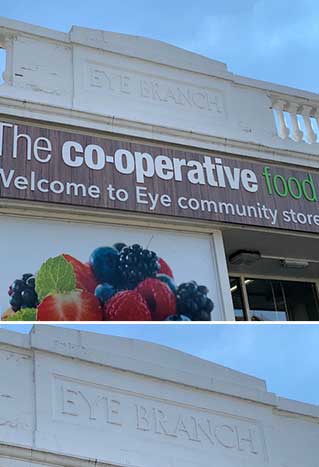
In 2009 the 'Eye Branch' lettering had been splendidly picked out in blue – all whited over by the 2020 photograph (above). Also worth noting are the Art Deco-style capitals supporting the over-sign.
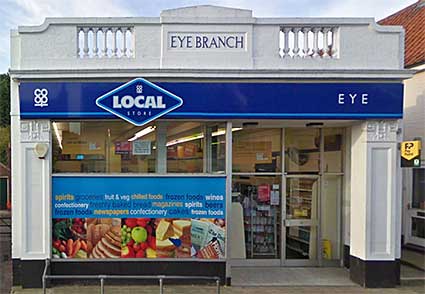 2009 images
2009 images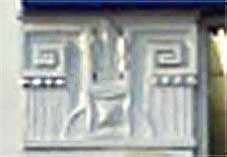
41/43 Church Street
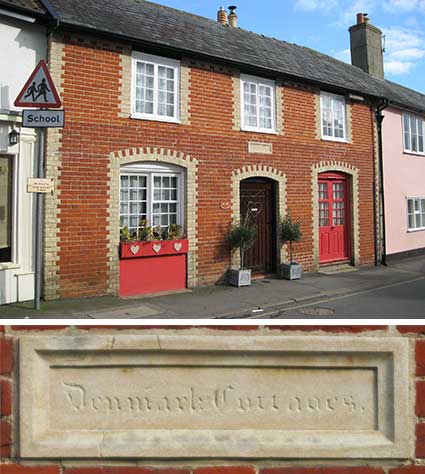
At this end of the street, note the steady curve towards the church, which follows the outer bailey, or earthworks which enclosed the inner bailey and 'motte', the mound on which the castle stood, of Eye Castle..
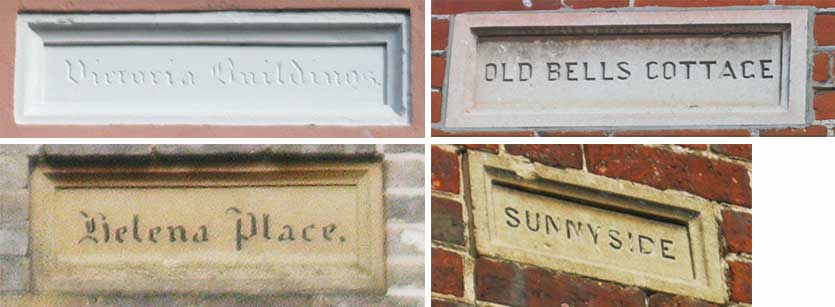
Eye Castle
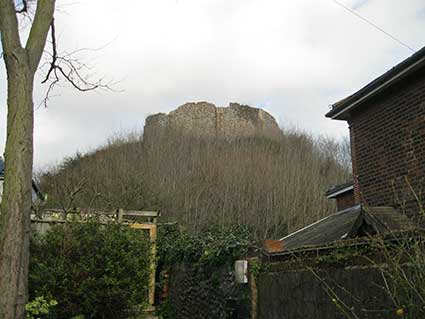
Here is a view of the motte and castle behind the houses in, logically, Castle Street. In Anglo-Saxon Britain, prior to the Norman Conquest, Eye was one of the numerous holdings of Edric of Laxfield, a wealthy and influential Anglo-Saxon and the third largest land holder in Suffolk. After the Norman Conquest, the importance of the town was firmly established in the region when the Honour of Eye was granted to William Malet, a Norman Lord, and continued to be held by royal or noble families until 1823. Between 1066 and 1071, Malet constructed a castle, to establish his military and administrative headquarters, and started a highly successful market thus initiating the urbanisation of the settlement. Later in 1086-7, Robert Malet, William’s son, founded the Benedictine Priory of St Peter, a cell of the Abbey of Bernay in Normandy. The Abbey (now a private house) occupies the site and there are very few remains of the priory still in existence. Eye began to lose its strategic importance after 1173 when the castle was attacked by Hugh Bigod, Earl of Norfolk, during the rebellion against Henry II, and later during the Barons’ War of 1265 after which it never regained its former status. Its prison continued to be used use until the early 17th century despite a gradual demolition of most of the castle buildings during the 14th century. A windmill, built in 1561-2, stood on the motte until the circular mock keep was built in 1844. The ruins of the keep are still in place today, and Castle Street and Church Street trace the elliptical shape of the former outer bailey.
Gospel Centre chapel

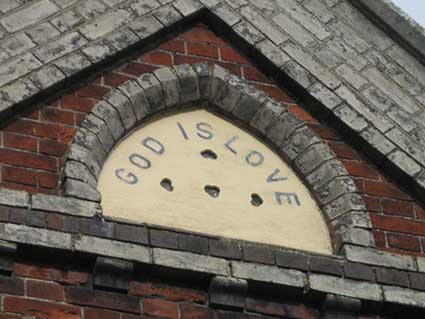
Because The Vine Church, accessed via Dove Lane off Castle Street, is a former Baptist chapel (1868), we assume that the Gospel Centre is a former Methodist chapel. The lettered name board in a recess at the top of the gable probably covers an original stone tablet saying 'Methodist Chapel 1877'.
The two foundation stones shown below include the builder's name. A.A. Jermyn 'of Lynn' (the early name for Kings Lynn) may have been a Methodist elder who was instrumental in the setting up of the chapel.
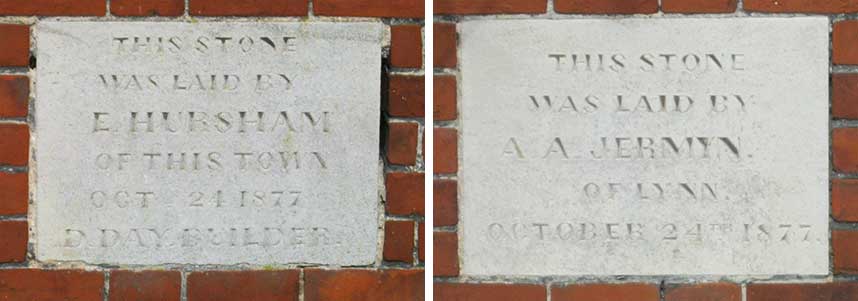
'THIS STONE
WAS LAID BY
E. HURSHAM
OF THIS TOWN
OCT. 24 1877
D. DAY. BUILDER'
'THIS STONE
WAS LAID BY
A.A. JERMYN.
OF LYNN.
OCTOBER 24TH 1877.'
We haven't even mentioned the fine Guildhall and huge church at the end of Church Street...
18 Lowgate Street
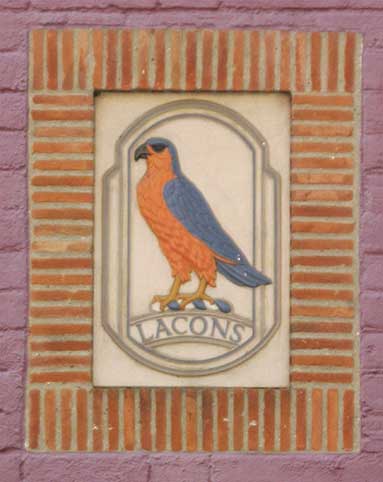
This ceramic Lacons sign is preserved on 18 Lowgate Street, formerly The Horse Shoes public house. Other ceramaic Lacons signs can be found around Suffolk, for example in Knodishall and Westleton. Started trading in the 18th century and closed in either 1991 or 1992. Eye now has only one public house, The Queen’s Head. In 1850 there were fourteen, and five beer houses. Until the early 20th century there were two breweries, one in Lambseth Street, and one in Wellington Road, plus the maltings found in most Suffolk towns.
Corner of Lowgate Street and Magdalen Street

Well, it certainly looks like a bank. That pediment between balustraded decoration, surely once bore the word 'BANK' carved in stone. The ghost sign 'ESTABLISHED' can be made out, but not the date. Today it is the Bank Arts Centre – it seems to think that it's at 18 Castle Street, which is an Eye eccentricity, presumably.
12 Church Street

In 2009 the 'Eye Branch' lettering had been splendidly picked out in blue – all whited over by the 2020 photograph (above). Also worth noting are the Art Deco-style capitals supporting the over-sign.
 2009 images
2009 images
41/43 Church Street

At this end of the street, note the steady curve towards the church, which follows the outer bailey, or earthworks which enclosed the inner bailey and 'motte', the mound on which the castle stood, of Eye Castle..
'DENMARK COTTAGES'
This chunky style of house name frame can be seen
several times in variantions in Church Street. Those on the left sid of
this group echo the 'gothic florid' letterform of Denmark
Cottages.Those on the right are more workaday capitals.
Eye Castle

Here is a view of the motte and castle behind the houses in, logically, Castle Street. In Anglo-Saxon Britain, prior to the Norman Conquest, Eye was one of the numerous holdings of Edric of Laxfield, a wealthy and influential Anglo-Saxon and the third largest land holder in Suffolk. After the Norman Conquest, the importance of the town was firmly established in the region when the Honour of Eye was granted to William Malet, a Norman Lord, and continued to be held by royal or noble families until 1823. Between 1066 and 1071, Malet constructed a castle, to establish his military and administrative headquarters, and started a highly successful market thus initiating the urbanisation of the settlement. Later in 1086-7, Robert Malet, William’s son, founded the Benedictine Priory of St Peter, a cell of the Abbey of Bernay in Normandy. The Abbey (now a private house) occupies the site and there are very few remains of the priory still in existence. Eye began to lose its strategic importance after 1173 when the castle was attacked by Hugh Bigod, Earl of Norfolk, during the rebellion against Henry II, and later during the Barons’ War of 1265 after which it never regained its former status. Its prison continued to be used use until the early 17th century despite a gradual demolition of most of the castle buildings during the 14th century. A windmill, built in 1561-2, stood on the motte until the circular mock keep was built in 1844. The ruins of the keep are still in place today, and Castle Street and Church Street trace the elliptical shape of the former outer bailey.
Gospel Centre chapel


Because The Vine Church, accessed via Dove Lane off Castle Street, is a former Baptist chapel (1868), we assume that the Gospel Centre is a former Methodist chapel. The lettered name board in a recess at the top of the gable probably covers an original stone tablet saying 'Methodist Chapel 1877'.
The two foundation stones shown below include the builder's name. A.A. Jermyn 'of Lynn' (the early name for Kings Lynn) may have been a Methodist elder who was instrumental in the setting up of the chapel.

'THIS STONE
WAS LAID BY
E. HURSHAM
OF THIS TOWN
OCT. 24 1877
D. DAY. BUILDER'
'THIS STONE
WAS LAID BY
A.A. JERMYN.
OF LYNN.
OCTOBER 24TH 1877.'
We haven't even mentioned the fine Guildhall and huge church at the end of Church Street...
18 Lowgate Street

This ceramic Lacons sign is preserved on 18 Lowgate Street, formerly The Horse Shoes public house. Other ceramaic Lacons signs can be found around Suffolk, for example in Knodishall and Westleton. Started trading in the 18th century and closed in either 1991 or 1992. Eye now has only one public house, The Queen’s Head. In 1850 there were fourteen, and five beer houses. Until the early 20th century there were two breweries, one in Lambseth Street, and one in Wellington Road, plus the maltings found in most Suffolk towns.
Corner of Lowgate Street and Magdalen Street

Well, it certainly looks like a bank. That pediment between balustraded decoration, surely once bore the word 'BANK' carved in stone. The ghost sign 'ESTABLISHED' can be made out, but not the date. Today it is the Bank Arts Centre – it seems to think that it's at 18 Castle Street, which is an Eye eccentricity, presumably.
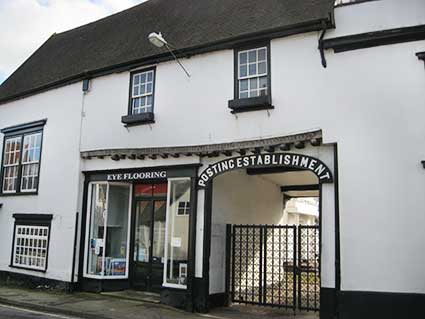 2022 images
2022 images Photograph courtesy Andrew Smith
Photograph courtesy Andrew Smith 2018 images
2018 images